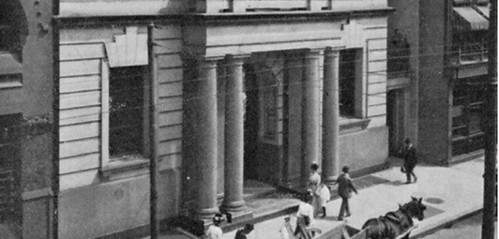
PREV ARTICLE
NEXT ARTICLE
FULL ISSUE
PREV FULL ISSUE
LOOSE CHANGE: MAY 16, 2021Here are some additional items in the media this week that may be of interest. -Editor Addressing CoinsWeekly Editor Ursula Kampmann's questions about the criteria for choosing the American Medallic Sculptors Association Medal Of the Year award, AMYA Coordinator Mel Wacks and Juror Philip Attwood explained the choice in a CoinsWeekly follow-up article this week. -Editor
To read the complete CoinsWeekly article, see:
To read the earlier E-Sylum article, see:
Fans of minting history and technology might like this CoinsWeekly article about the Schuler high-performance minting press. -Editor
To read the complete article, see:
To visit the minting section of the Schuler website, see:
Kavan Ratnatunga's International Bank Note Society talk on Ceylon Banknotes is available on YouTube. -Editor From the first introduction of Paper currency for Ceylon, by the Dutch, in 1785, to 1884 when the Colonial Government of Ceylon took over the issue of Currency, is a 100-year history, that are poorly documented in Standard Banknote Catalogs. The language on the notes changed from Dutch to English with the British takeover in 1796. Only the denomination was in Sinhala and Tamil. Early notes in Rix Dollars were redeemable in Copper. British Sterling Pounds was introduced in 1825. Watermarks were introduced around the 1840s and are hardly documented. Private Banks such as The Chartered Mercantile Bank of India, London & China - Ceylon Branch, Oriental Bank Corporation issued notes from 1844. These are not "Specialized" Issues as cataloged. They were the only issuer of Banknotes in Ceylon from 1856 till the Private Banks crashed in early 1880 due to the Coffee blight. Decimal Currency in Rupees was adopted in 1870. Dr. Kavan Ratnatunga has now compiled all available images of Ceylon Banknotes from Auction Catalogs, HSBC Archives, British Museum, and the National Museum Colombo, in his website notes.lakdiva.org, on which this lecture is based.
To watch the video, see:
Historian John Steele Gordon published an article in the ABA Banking Journal about three early U.S. bank buildings. -Editor Before there could be bank buildings, there had to be banks, and the United States didn't have any when it declared its independence. Great Britain had forbidden the American colonies from operating banks, not the least of the restrictions imposed by the mother country on the burgeoning American economy. But then in 1781, the Continental Congress chartered a bank with the unwieldy name of The President, Directors, and Company of the Bank of North America. (In 1825 the bank changed its name to what everyone called it anyway, the Bank of North America, or BNA for short.) It opened in Philadelphia on January 7, 1782. It was located in a store owned by its chief cashier, Tench Francis, on Chestnut Street, which had been redesigned to serve as a bank. The converted store would be the bank's headquarters for the next 64 years.
To read the complete article, see:
And here's a gallery of images of Bank of England buildings in London from 1700 to today. -Editor The Bank of England opened in rented accommodation on Cheapside in London in 1694. Today, it's based in a building on nearby Threadneedle Street which covers three acres. Our collection shows how the exterior of its building has changed since the site was purchased in 1724.
To read the complete article, see:
Wayne Homren, Editor The Numismatic Bibliomania Society is a non-profit organization promoting numismatic literature. See our web site at coinbooks.org. To submit items for publication in The E-Sylum, write to the Editor at this address: whomren@gmail.com To subscribe go to: https://my.binhost.com/lists/listinfo/esylum All Rights Reserved. NBS Home Page Contact the NBS webmaster 
|



